Continuation with AUTO
Here you can find eight tutorials dealing with different physical problems that can be analyzed with auto. In order to get access to the supplementary material please contact
Oliver Kamps okamp@uni-muenster.de
Here you can find eight tutorials dealing with different physical problems that can be analyzed with auto. In order to get access to the supplementary material please contact
Oliver Kamps okamp@uni-muenster.de
DROP -- Steady drop and film states on a horizontal homogeneous substrate

The tutorial DROP explores an equation for steady drop-and-hole solutions derived from the dimensionless thin film (or lubrication) equation. You will calculate steady solution of the equation by continuation in a number of different control parameters (domain size, mean height).
THFI - Sliding drops modelled by a thin film equation for a liquid layer or drop on an inclined homogeneous substrate
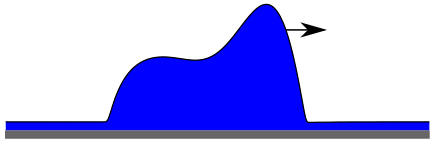
In the tutorial THFI a dimensionless thin film equation closely related to the one in DROP is used. In this case a lateral driving force is included and solutions for sliding drops on an inclined plane are examined. You will calculate steady solutions [in the comoving frame], in particular, drops moving at a constant velocity. The main treated control parameter is the inclination angle.
HETDROP - Steady states of a thin film equation for a liquid layer or drop on a horizontal heterogeneous substrate
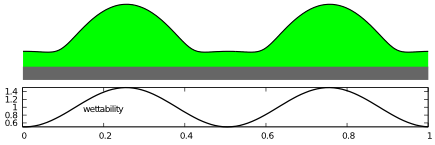
In the tutorial HETDROP the dimensionless thin film equation used in the tutorial DROP is adapted to a substrate of varying wettability. In particular, the long-range contribution of the disjoining pressure is sinodally modulated. You will calculate steady solutions and their bifurcations that emerge when using the heterogeneity strength as control parameter.
LINDROP - Linear stability of steady solutions of a thin film equation for a horizontal homogeneous substrate
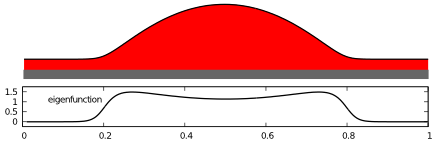
The tutorial LINDROP calculates the same steady solutions as the tutorial DROP but this time together with their (1d and 2d) linear stability with respect to time-dependent perturbations. You will calculate a dispersion relation (growth rate over transversal wave number) and continue solutions and their stability in various parameters.
ACCH - Steady states of Allen-Cahn and Cahn-Hilliard equation

The tutorial ACCH explores steady states of the Allen-Cahn and the Cahn-Hilliard equation with periodic boundary conditions. These equations describe, e.g., the dynamics of concentration profiles of binary fluids or the dynamics of magnetization. You will calculate steady solutions and continue them using domain size and mean concentration as control parameters.
ACCHFP - Fixed points of Allen-Cahn equation
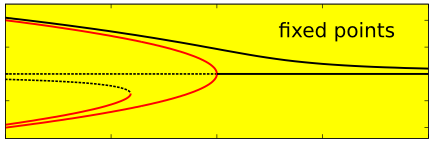
The tutorial ACCHFP explores the spatially uniform and temporally constant solutions of the Allen-Cahn equation. You will calculate steady states as a function of the continuation parameters temperature / chemical potential / external field. The results that you will obtain, may look familiar to you from the Ising model.
CHBC - Steady states of Cahn-Hilliard equation in confined geometry with energy bias
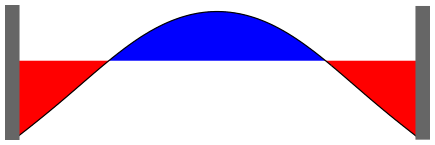
The tutorial CHBC explores steady solutions to the Cahn-Hilliard equation with imposed non-periodic boundary conditions (energetic bias). You will calculate steady solutions on different branches continuing them in the energetic bias parameter.
CCH - Travelling drops and waves in the convective Cahn-Hilliard equation

The tutorial CCH explores the convective Cahn-Hilliard equation. Compared to the Cahn-Hilliard equation, it features an added driving force. You will calculate stationary solutions representing moving density 'drops' and continue them using the driving force as control parameter.
HETDRIV - Steady drops on a heterogeneous substrate under lateral driving
The tutorial HETDRIV explores steady drops on a surface with heterogeneous wettability under the influence of lateral driving. You will calculate these steady states as a function of continuation parameters: domain length, heterogeneity strength and driving parameter.
SH and SHPER - Steady states of the Swift-Hohenberg equation
In the tutorial SH and SHPER the dimensionless Swift-Hohenberg equation is analyzed. You will calculate homogeneous and periodic steady states. In particular, you will calculate localized periodic solutions using the boundary value mode of auto07p and observe their bifurcation behaviour. Additionally you will follow small amplitude modulations of the homogeneous state using the system size as a control parameter.